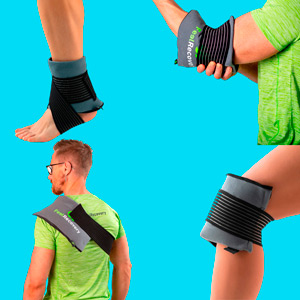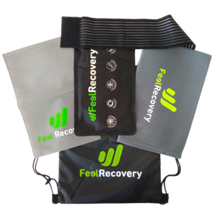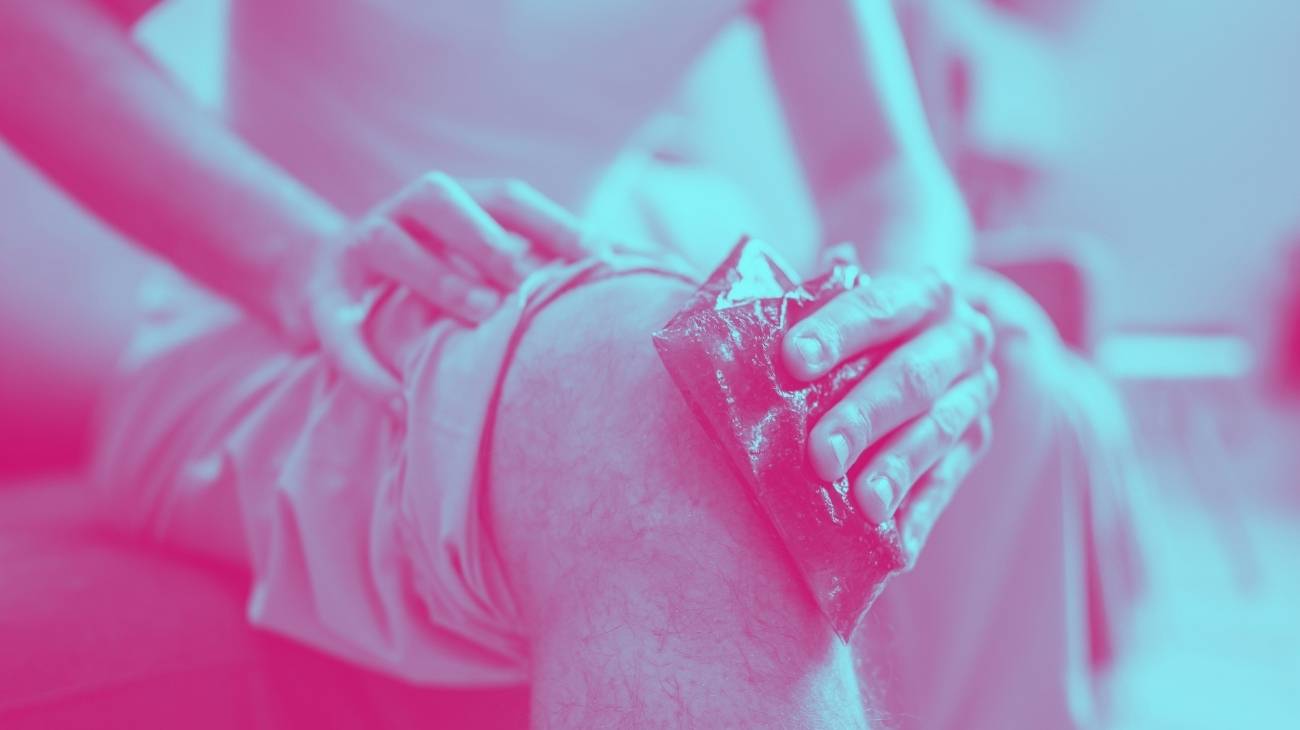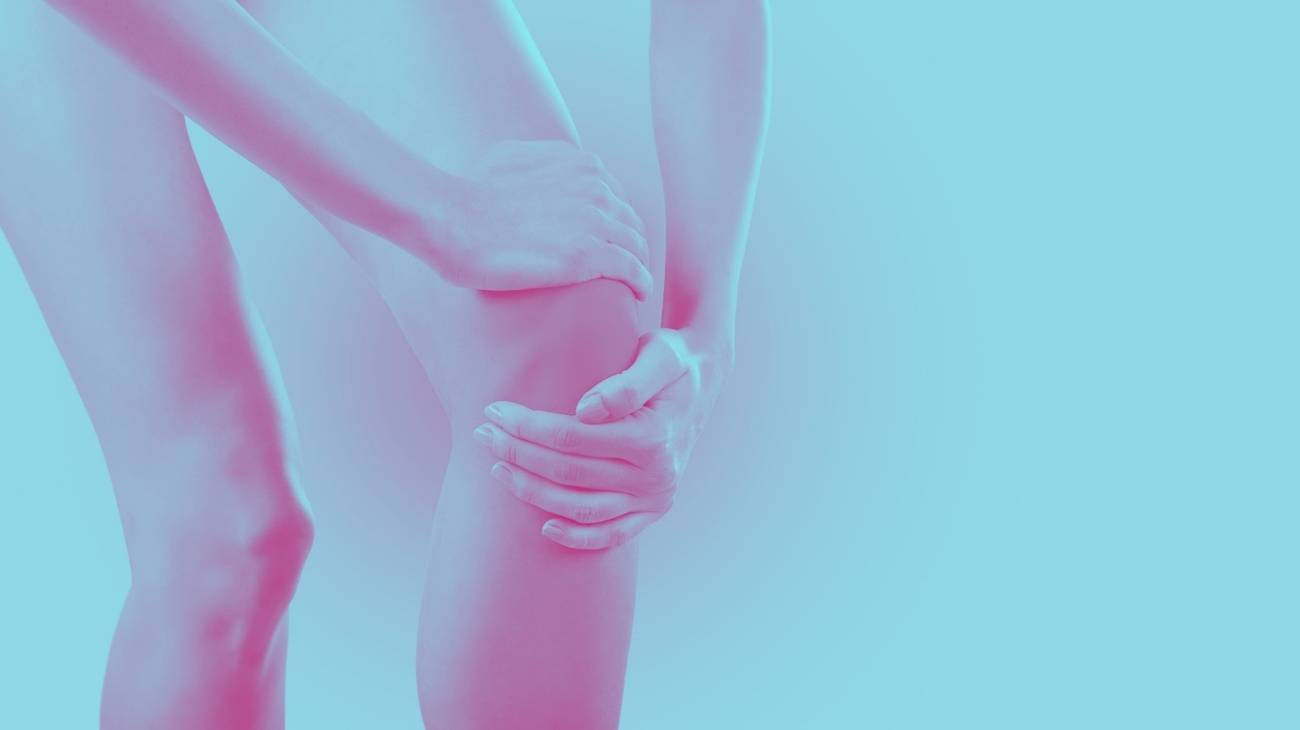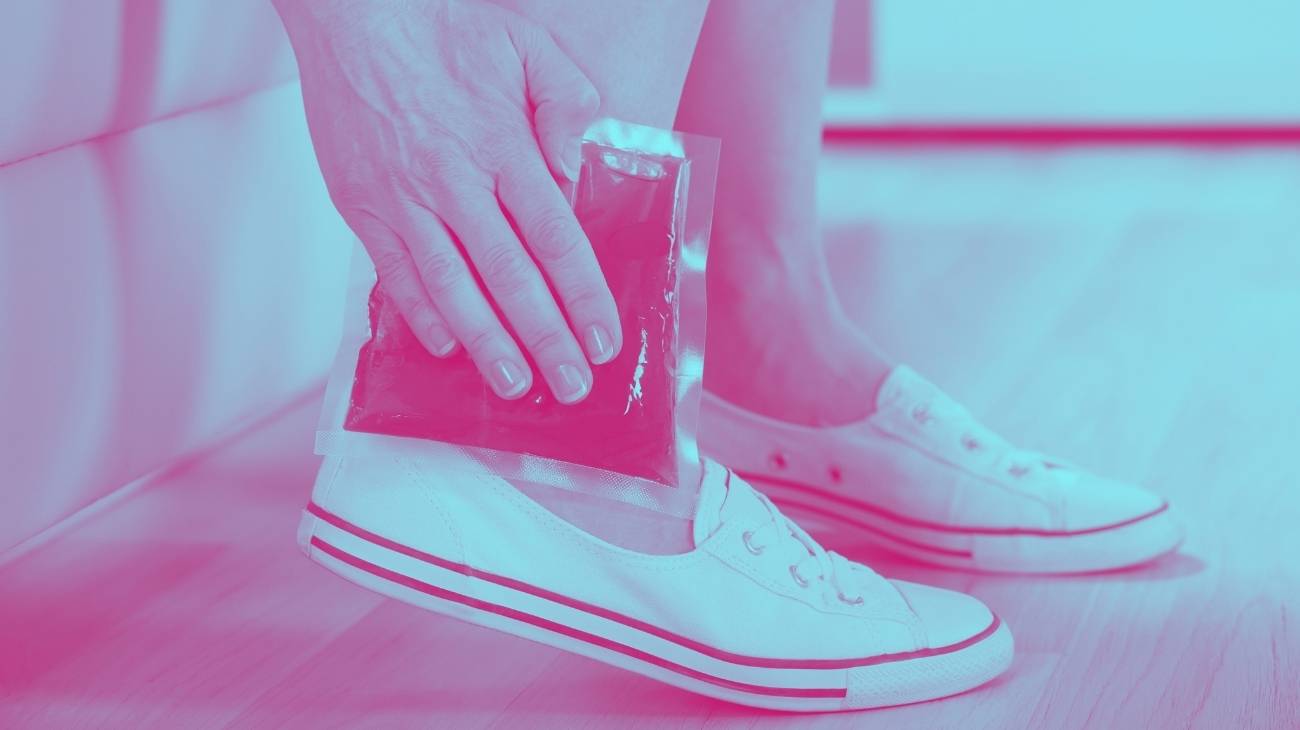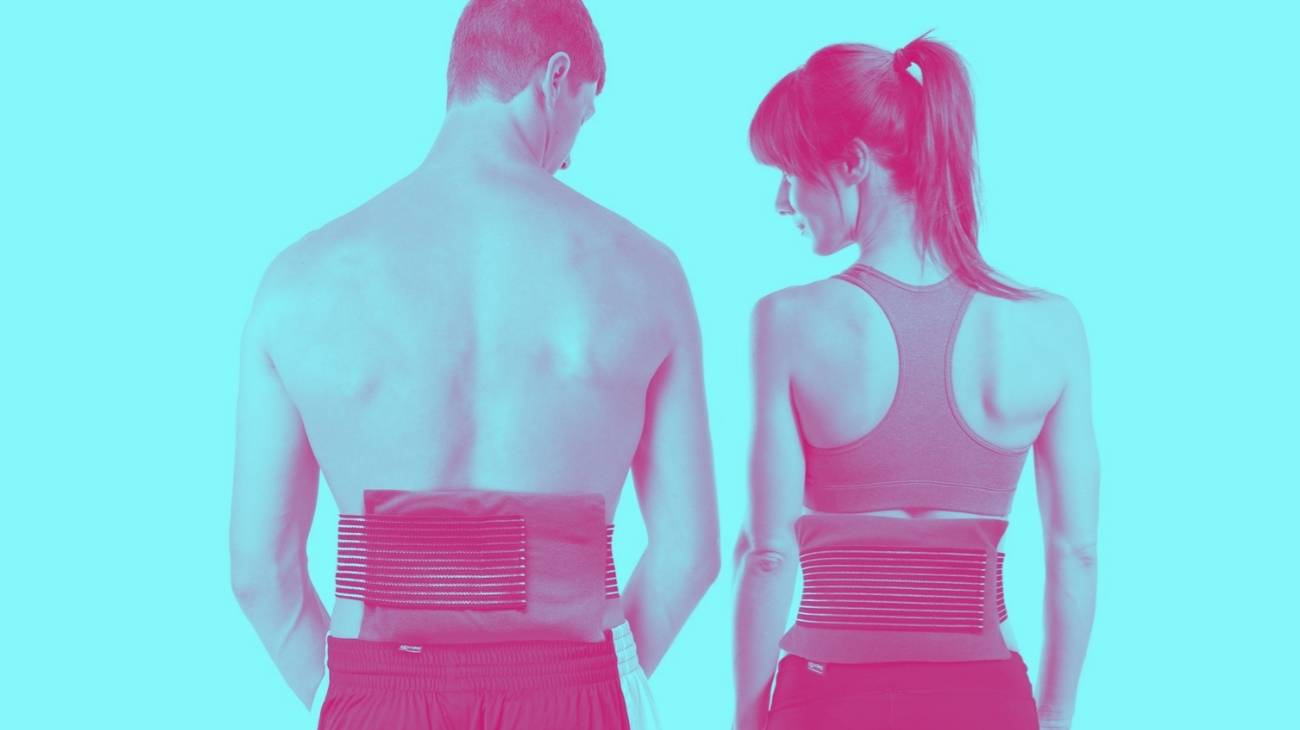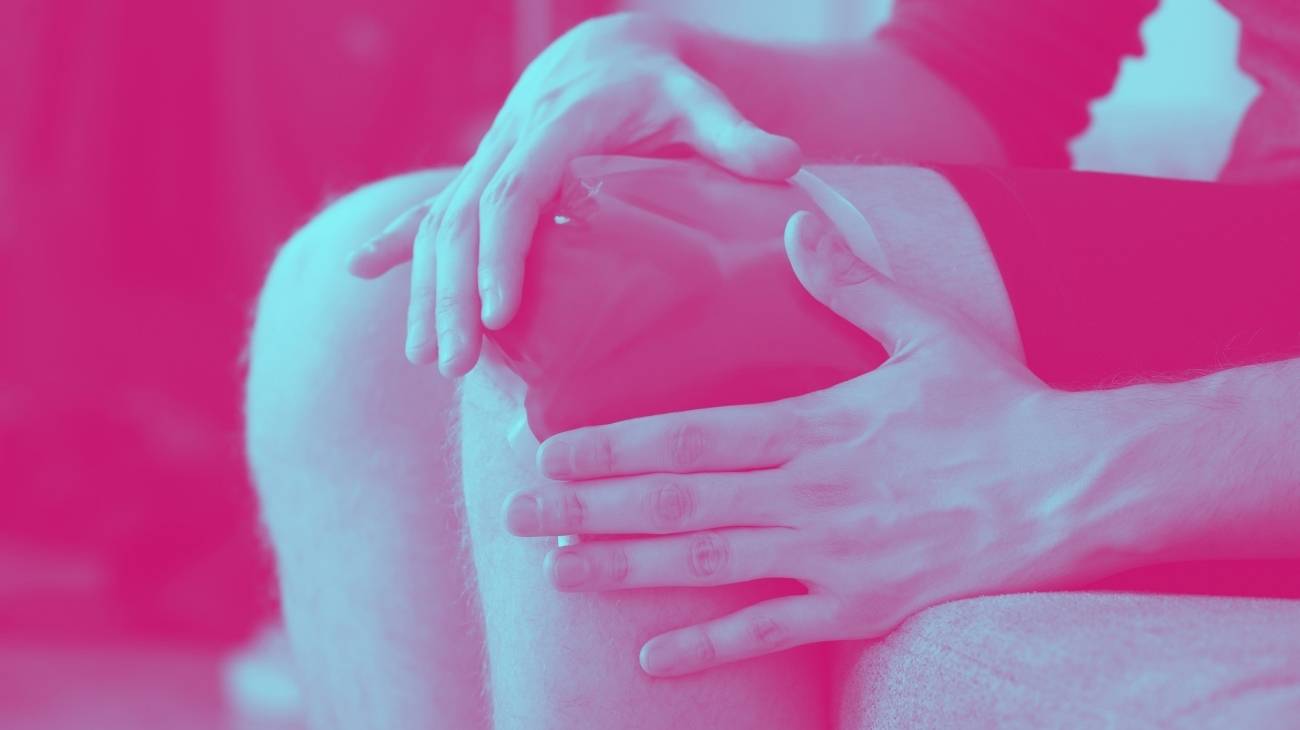- What is the best ice gel pack for tendonitis?
- Video: How to use hot and cold gel packs?
- Types of hot & cold packs you should know about
- What are the causes of tendon pain and swelling due to tendonitis?
- Benefits of ice gel packs to relieve tendonitis pain
- How can you use ice gel packs to relieve joint inflammation due to tendonitis?
- The best hot and cold gel packs for pain relief
The use of hot and cold gel packs to relieve pain and swelling of the tendons due to tendonitis is very effective in the first 3 days. You can relieve the pain and swelling of the injured tendon with this cold therapy.
However, before using this home remedy, it is important that you know the causes and origin of tendon pain and swelling so that you do not repeat it. We will also talk about the benefits of applying cold to the injured area and how to do it properly.
What is the best ice gel pack for tendonitis?
- Size: One size
- Colors: Grey and Black
- Material: Breathable
- No. of products: 1 Piece
- Uses: Rehabilitation and sports
- Always Flexible
- High Quality
- Complete pack
- Extra-Strong Velcro
- Ergonomic design
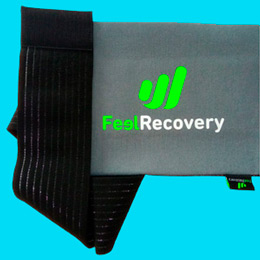
Extra-Strong Velcro
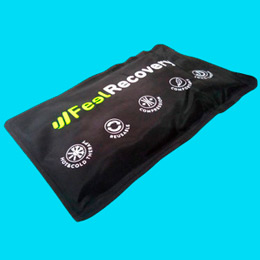
High Quality
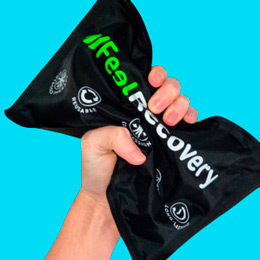
Always Flexible
- Easy to wash
- Quality protective cover
- Highly durable cold therapy
- Fully adjustable
- Cold therapy only
- One size large only
Without spending extra money you will be able to decrease muscle stress and lower the feeling of footfatigue by simply chilling the thermal bag in the refrigerator for 2 hours. Don't hesitate any longer and choose this practical support with adjustable straps to generate compression and stimulate blood circulation. Its neoprene material is breathable and eliminates sweat, which makes this thermal splint an ideal product to be used in summer. Consider that, it does not always generate support in difficult areas of the ankle.
- Material: Nylon
- Uses: Various body areas
- Type of adjustment: Velcro strap
- Cover: Yes
- No. of units: 2 Gel Packs
- Microwave safe
- Hot/cold therapy
- Quality materials
- Adjustable Velcro strap
- Medium flexibility with cold therapy
- Delicate wash
If you are looking to shorten recovery time from injury, you can use this adjustable thermal elbow pad on a daily basis by simply getting the pads to the required temperature by placing them in the microwave or refrigerator. Compression therapy can also be applied to the elbow with this versatile product, as its adjustable straps will help you find the ideal pressure to stimulate blood circulation. During use, they may cause discomfort by slipping on the arm.
- Microwaveable
- Heat/cold therapy
- One size only (M)
It is useful for treating plantar fasciitis, Achilles tendonitis and ankle sprains, as the size covers all areas that are sensitive to injury. Its multifunctional design will serve you to adapt the thermal bag to the affected places and hold them with great precision. The Velcro straps may lose effectiveness as you wear this thermal ankle brace.
- Hot/cold therapy
- Suitable for various body areas
- Low flexibility with cold therapy
It is suitable for use with the refrigerator or microwave, in case you want to apply heat therapy. Its materials keep the temperature controlled in sensitive areas to improve blood circulation and achieve faster natural healing effects. Keep in mind that gel pads may cause unpleasant odors during use.
- 3 Gel Packs
- Adjustable compression with quality finishes
- One size fits all
This patella support has 4 adjustable straps strategically placed to immobilize harmful movements, which will also prevent muscle tears. You only have to remove the heating pads and place them on the inside, after getting the necessary temperature in the microwave or refrigerator. It is important to know that, in some cases, the heat does not last long and causes some discomfort.
- Material: Nylon
- Uses: Elbow, Wrist, Knee
- Type of adjustment: Strap with Velcro
- Cover: Yes
- No. of units: 2 Gel Packs
- Includes 2 Gel Packs
- Long lasting cold therapy
- Cold therapy only
You will not need much time to achieve the therapeutic temperature, since by simply placing it in the microwave or in the refrigerator you will obtain the results you are looking for to apply to the affected area. Keep in mind that, during use, the adjustable straps may weaken and lose their holding capacity.
- 4 Adjustable straps
- 3 Gel Packs
- Hot/cold therapy
- Quality finishes
- 30 min duration
- Bulky design
It is suitable for use in arthritis treatment and in people with muscle weakness. The feeling of fatigue in the legs will begin to disappear thanks to the delivery of oxygen generated by the cold therapy combined with thermotherapy. Please note, the fabric is neoprene and may be uncomfortable on the front of the knee due to the accumulation of material.
- Material: Nylon
- Uses: Various body areas
- Type of adjustment: Velcro strap
- Cover: Yes
- No. of units: 2 Gel Packs
- Adjustable Velcro strap
- 2 Units per order
- Bulky design
By simply placing it in the microwave or freezer, according to your needs, you will achieve the ideal combination to combat radial tunnel syndrome, tennis elbow and bursitis. The medical gel packs are reusable, but keep in mind that for best results you will need to use it with a compression sleeve, which may be ineffective for some users.
Video: How to use hot and cold gel packs?
Types of hot & cold packs you should know about
What are the causes of tendon pain and swelling due to tendonitis?
The tendon is a band of fibrous tissue that connects the muscle to the bone and transmits force and movement to the muscle. The cause of tendonitis is the inflammation of a tendon, which leads to severe pain in or around the tendon.
This damage usually improves within 2-4 weeks. However, in most cases it becomes a chronic problem if the joint continues to be stressed and it takes up to 6 weeks or more to heal.
One of the most common manifestations of tendinitis is Achilles tendinopathy in the ankle, which is very common in runners. Also rotator cuff tendinopathy of the shoulder, lateral epicondylitis or tennis elbow, golfer's elbow, thrower's shoulder, swimmer's shoulder and jumper's knee.
Lest you forget, we will now discuss the causes of tendonitis:
- Overload from any physical activity: This situation leads to chronic degenerative changes in the tendons.
- Sporadic training: Weekend athletes who train sporadically often develop tendon pain.
- Repetitive strain: The most common cause of tendonitis is using the same joints for the same movements, which leads to injury. Sports that require this type of strain include: Basketball, bowling, golf, tennis, running, swimming and baseball.
- Poor working conditions: Some office jobs and other situations that require repetitive movements, awkward positions, overhanging arms, vibration and other poor conditions can cause tendon injuries. Some of them use inadequate machinery and equipment, old shoes and others.
- Age: Age is associated with a loss of elasticity, which increases susceptibility to tendon injury.
- Reaction to certain medications: As a side effect of treatment, this can lead to a loss of elasticity and thus greater susceptibility to injury.
- Difference in leg length: People born with this condition have to exert more effort when walking, which can lead to wear and tear on the tendon.
Benefits of ice gel packs to relieve tendonitis pain
Therefore, we would like to introduce you to the many benefits of cold therapy for the treatment of tendonitis:
- Applying cold to the area affected by tendonitis increases the natural healing power of the injury. It should be used immediately to treat new injuries or soft tissue damage. It slows the process of tissue damage and reduces swelling.
- For pain, cold acts as a numbing agent for the nerves in and around the hamstrings, relieving pain. It therefore acts as a natural, organic painkiller, treating the pain at the source of the injury.
- It minimises long-term recovery time and allows a quick return to daily activities.
- Reduces the likelihood of recurrence of the next tendon injury.
- Reduces the risk of long-term tendonitis developing into chronic tendonitis.
- You can monitor your treatment and healing at home.
- Minimises the cost of anti-inflammatory medication (tablets, injections, hospitalisation, etc.).
- It is a proven and effective healing method that has been used for centuries to combat the pain and inflammation of tendonitis.
- A 100% natural, effective and very economical alternative that you can use yourself.
How can you use ice gel packs to relieve joint inflammation due to tendonitis?
Cold gel packs are an excellent option for tendonitis if used within 72 hours of the onset of pain and inflammation. The injured area is numbed, tissue damage is minimised and pain and tenderness are relieved. In addition, the blood vessels contract, reducing swelling and inflammation.
However, it is important to know how to properly use cold gel packs to treat joint tendonitis, and we will explain this to you below:
- Freeze the gel-filled bags in the freezer or refrigerator for at least 2 hours.
- Once it reaches the right temperature, place it directly on the injured area. You do not need to worry about using a cloth or handkerchief to avoid direct contact with the skin, as our products have a surface that is pleasant to touch.
- The duration of cold application should be limited to 15-20 minutes. Sessions can be done every 4-6 hours for 3 consecutive days.
- Observe the injured area every 5 minutes during cold contact to avoid damaging the skin.
- After the treatment, you should put the gel cold pack back in the refrigerator or freezer so that it reaches the right temperature for reapplication.
- After the first 3 days after the injury, it is recommended to apply heat as it has a greater effect on pain and inflammation in chronic tendonitis. Especially if the tissue is already tense and constricted, cold will only cause further tension during movement. Cold is also not recommended for cramps or spasms and for people with Raynaud's syndrome, as it increases pain.
- It is also recommended to combine cold gel-filled compresses with rest. In other words, any movement of the tendon should be avoided for at least 3 days. This includes physically strenuous activities such as heavy lifting, twisting or reaching with force or sports.
- The use of orthopaedic aids such as knee braces, ankle braces, crutches or slings will help to protect the inflamed tendon and minimise physical strain. If you choose bandages, they have a special design that adapts to any part of the body and you can take them with you wherever you go.
- In the chronic phase, it is advisable to combine this with rehabilitation exercises. These exercises should be done with breaks between stretches and exercises.

